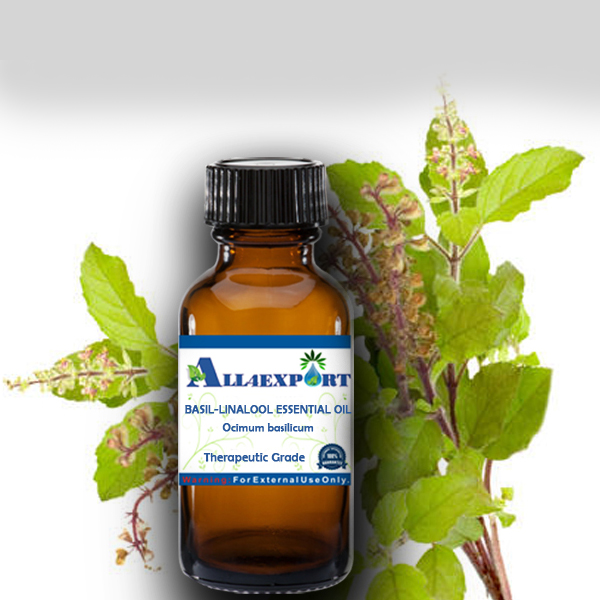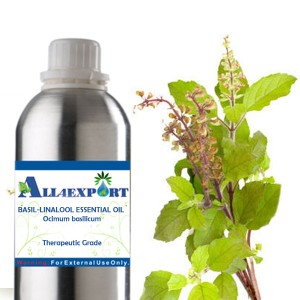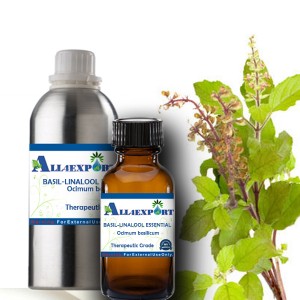| BASIL-LINALOOL ESSENTIAL OIL |
Botanical Name | : | Ocimum basilicum | Country of Origin | : | India | Solubility | : | Insoluble in water, soluble in alcohol and oils | Specific Gravity | : | 0.922 @ 72°F | Optical Rotation | : | -12 | Refrective Index | : | 1.492 @ 72°F | Plant Part | : | Leaves | Blend With | : | Basil essentil oil blends well with Bergamot, Clary Sage, Clove Bud, Lime, Eucalyptus, Juniper, Lemon, Neroli, and Rosemary | CAS No | : | 8015-73-4, F.E.M.A. : 2119 | Flash Point | : | 167 °F | Extraction Method | : | Steam Distilled |
|
Description : Basil Linalool Essential Oil is one of the finest oils available for calming and focusing the mind, and is also useful for easing tension in the head and neck. Linalool is a colourless liquid with a soft, sweet odour. It occurs naturally in many essential oils, such as tangerine, spearmint, rose, cypress, lemon, cinnamon and ylang ylang. It has a soft, sweet scent. Basil Linalool Essential Oil is more gentle than other forms of Basil essential oils
|
Constituents : Linalool, (-)-bornyl acetate, eugenol and eucalyptol.Methyl Chavicol |
How to use : To relieve tense muscles, dilute in a carrier oil of your choice and massage where needed or add a few drops to a warm bath. When in need of soothing or a mood boost, combine equal amounts of Bergamot, Clary Sage and Basil Linalool and diffuse. For topical application, dilute to 1-3%.
|
Benefit : Basil Linalool Essential is excellent for reducing head and neck tension and can help ease the transition into bedtime. This oil is also very uplifting, making it a wonderful addition to spiritual meditation practices or simply a time of positive reflection. |
Caution Note: Dilute before use; for external use only. May cause skin irritation in some individuals; a skin test is recommended prior to use. Contact with eyes should be avoided.
|



